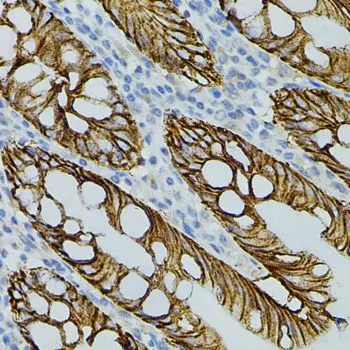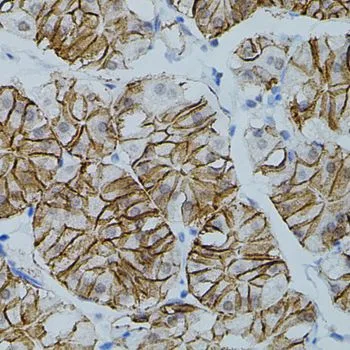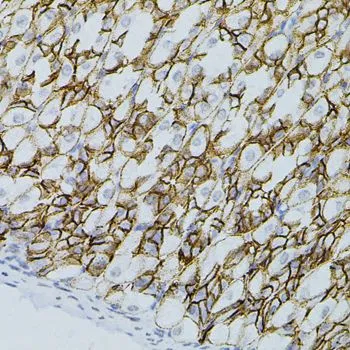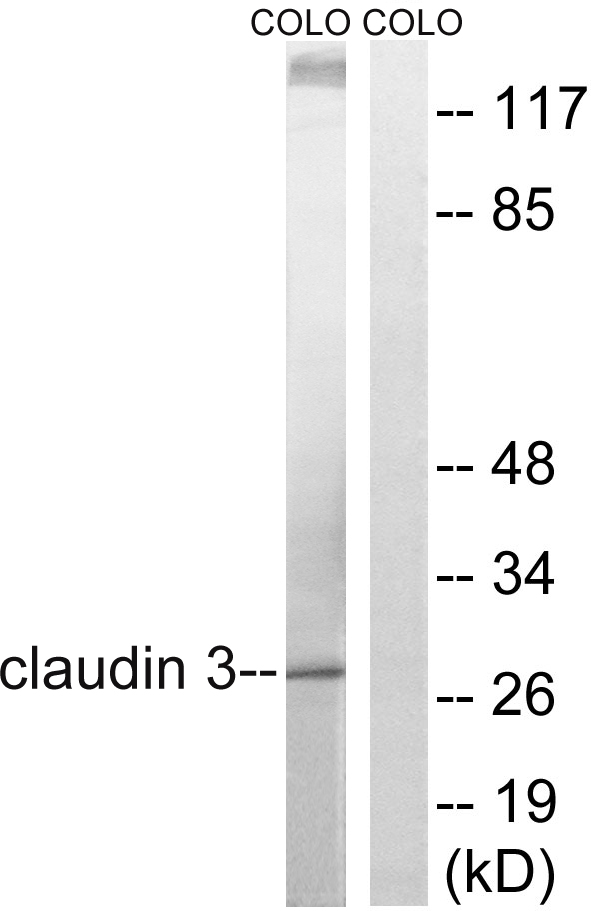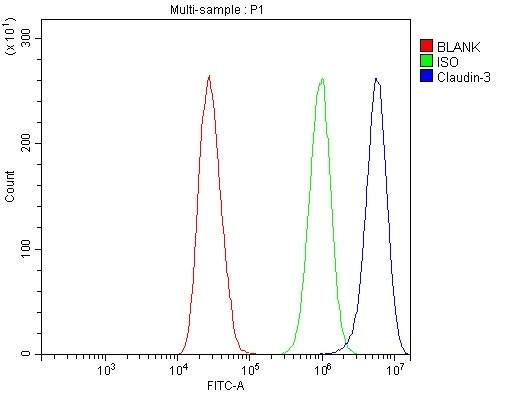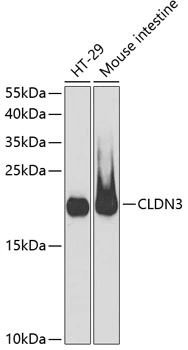
WB analysis of various sample lysates using GTX00665 Claudin 3 antibody. Dilution : 1:400 Loading : 25microg per lane
Claudin 3 antibody
GTX00665
ApplicationsWestern Blot, ImmunoHistoChemistry, ImmunoHistoChemistry Paraffin
Product group Antibodies
ReactivityHuman, Mouse
TargetCLDN3
Overview
- SupplierGeneTex
- Product NameClaudin 3 antibody
- Delivery Days Customer9
- Application Supplier NoteWB: 1:500 - 1:2000. IHC-P: 1:100 - 1:200. *Optimal dilutions/concentrations should be determined by the researcher.Not tested in other applications.
- ApplicationsWestern Blot, ImmunoHistoChemistry, ImmunoHistoChemistry Paraffin
- CertificationResearch Use Only
- ClonalityPolyclonal
- ConjugateUnconjugated
- Gene ID1365
- Target nameCLDN3
- Target descriptionclaudin 3
- Target synonymsC7orf1, CPE-R2, CPETR2, HRVP1, RVP1, claudin-3, CPE-R 2, CPE-receptor 2, Clostridium perfringens enterotoxin receptor 2, ventral prostate.1 protein homolog, ventral prostate.1-like protein
- HostRabbit
- IsotypeIgG
- Protein IDO15551
- Protein NameClaudin-3
- Scientific DescriptionTight junctions represent one mode of cell-to-cell adhesion in epithelial or endothelial cell sheets, forming continuous seals around cells and serving as a physical barrier to prevent solutes and water from passing freely through the paracellular space. These junctions are comprised of sets of continuous networking strands in the outwardly facing cytoplasmic leaflet, with complementary grooves in the inwardly facing extracytoplasmic leaflet. The protein encoded by this intronless gene, a member of the claudin family, is an integral membrane protein and a component of tight junction strands. It is also a low-affinity receptor for Clostridium perfringens enterotoxin, and shares aa sequence similarity with a putative apoptosis-related protein found in rat. [provided by RefSeq, Jul 2008]
- ReactivityHuman, Mouse
- Storage Instruction-20°C or -80°C,2°C to 8°C
- UNSPSC12352203

